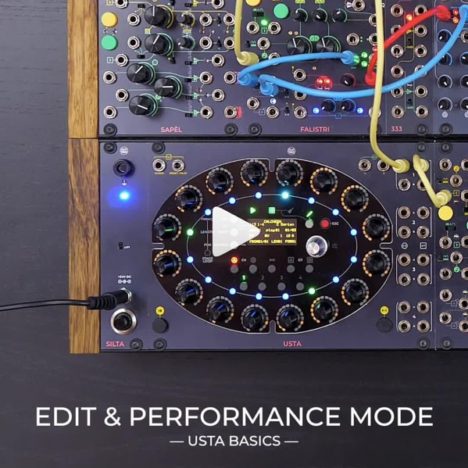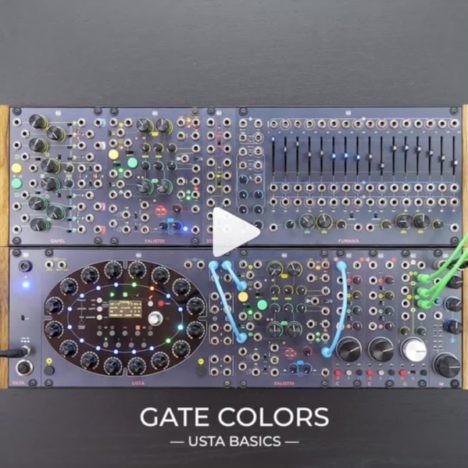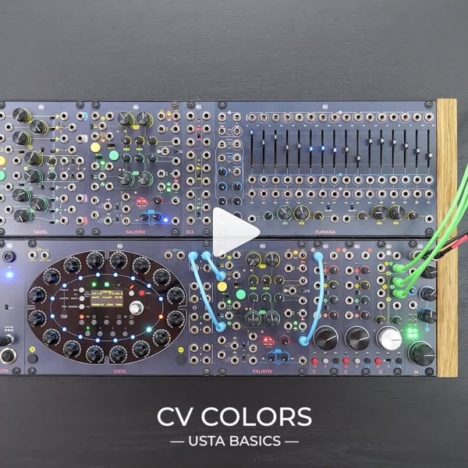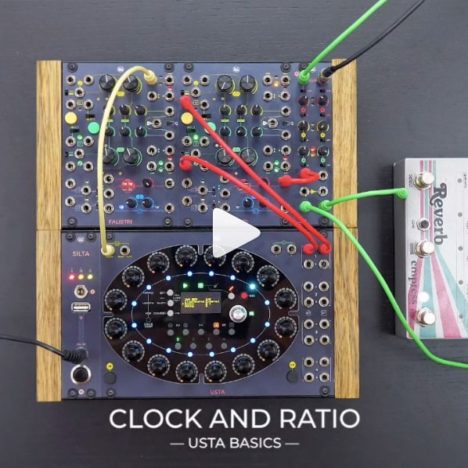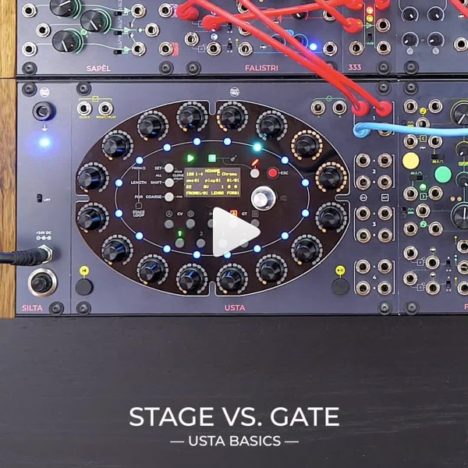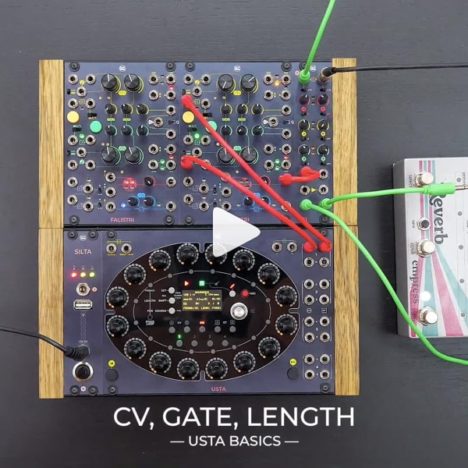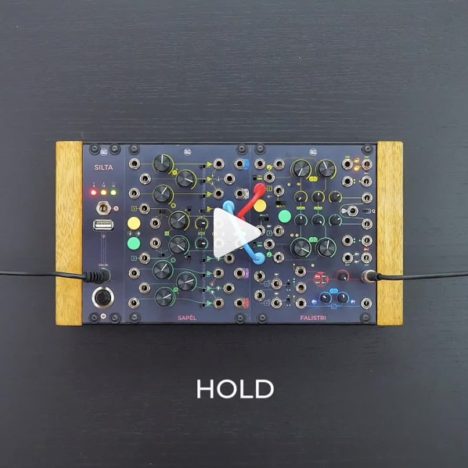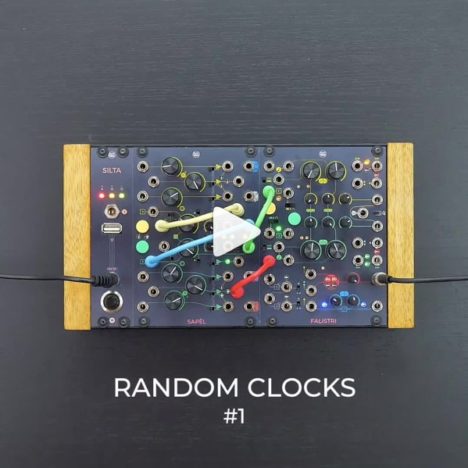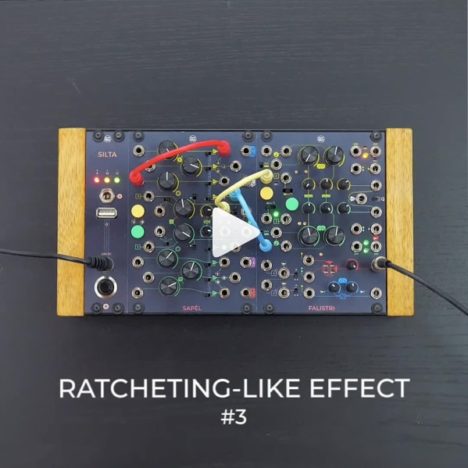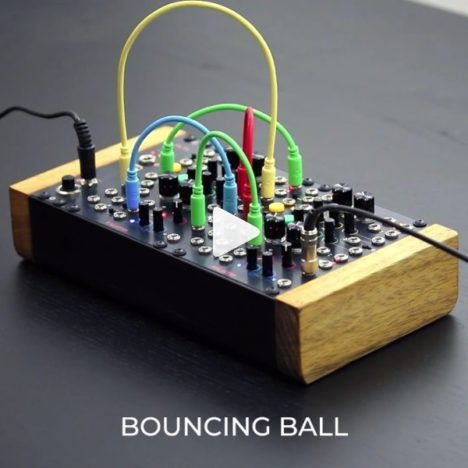- EURORACK
- CUNSA – Sound Seasoning
- CGM – Creative Mixer Series
- BRENSO – Entangled Sound Sources
- USTA – The Voltage Score
- FALISTRI – Movement Manager
- SAPÈL – Tamed Random Source
- FUMANA – Dual 16 Bands Spectral Editor
- 321 – Scale + Flip + Shift + Combine
- 333 – ProAudio Sum & Distribution
- SILTA 2016 – discontinued
- SEI – trunk lines – discontinued
- UNO – foldable case
- PLUS – modular modular case
- ACCESSORIES
- KNOBS
- 500 SERIES
- RESOURCES
- RESELLERS
- ABOUT
- ACCOUNT
Category / techniques
-
Edit & Performance Mode
Composing and performing are closer than they seem – both in life and in USTA!
2019-11-06 -
Gate Colors
Push the rotary encoders when any Gate layer is selected to switch between the gate colors. When blue, the encoder defines the time a gate stays high, from very short to an actual tie with the following stage, when green, the gate value determines the ratcheting number, when red, the gate is not generated.
2019-11-06 -
CV Colors
Every CV value of every stage can be played in three ways: in the ‘Blue’ one, the USTA sequencer outputs the generated value; in the ‘Green’ one, USTA slides from the previous stage’s value to the current one; in the ‘Red’ one USTA skips the current value and plays the previous one again.
2019-11-06 -
Clock and Ratio
Each of the four tracks of the #USTAsequencer can work at its own internal clock, or with a common external one. Once the clock is defined, you can select which ratio (multiplication or division) the track should run at.
2019-11-06 -
Stage Vs. Gate
Gate length or stage length? Are they the same thing? Not with USTA. If you are a little confused, fear not! This video explains everything you need to know about these essential concepts.
2019-11-06 -
CV, Gate, Length
This simple patch explores the main features of the USTA: how to select tracks, how to edit CV, Gate, and Length – but most importantly, how to get your sequence running!
2019-11-06 -
Hold
It’s time to push those buttons! It is true, we added buttons to FALISTRI and SAPÈL so that you can manually trig the envelopes or the S&H. But there’s another reason: if you hold them pushed, you can give to your patch a very dramatic effect by momentarily “freezing” it…
2019-11-06 -
Random Clocks #1
Random trigs with some SAPÈL self-patching! In this patch we’ll use the yellow main clock out to control the green one, then we’ll add some cross-patching within the yellow section to achieve some unpredictability.
2019-09-23 -
Ratcheting-Like Effect #3
What about trying some random repetitions? In this patch, a random ratcheting-like effect is obtained by using SAPÈL’s Random Clock to trig the envelope controlling the amplitude, while the clock density (or the ratcheting number) is varied through cross-patching.
2019-09-23 -
Bouncing Ball
In this video, we’ll see how to recreate the classic ‘Bouncing Ball’ patch – using only two FALISTRI!
2019-09-09
Categories
Recent Posts
- CUNSA v/s FUMANA: The same patch on two different filters!
- Subharmonic formant arpeggios patch breakdown: a classic Falistri patch!
- Memes aside, let’s make Sandstorm by Darude on our Frap Tools system
- Four tips to use CUNSA as a sound source (including ringing and additive synthesis)
- ‘Glass sounds‘ analog through-zero FM patch breakdown with Brenso and Cunsa!
